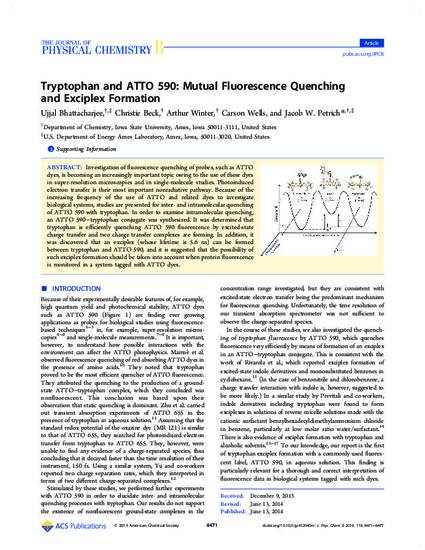
Investigation of fluorescence quenching of probes, such as ATTO dyes, is becoming an increasingly important topic owing to the use of these dyes in super-resolution microscopies and in single-molecule studies. Photoinduced electron transfer is their most important nonradiative pathway. Because of the increasing frequency of the use of ATTO and related dyes to investigate biological systems, studies are presented for inter- and intramolecular quenching of ATTO 590 with tryptophan. In order to examine intramolecular quenching, an ATTO 590–tryptophan conjugate was synthesized. It was determined that tryptophan is efficiently quenching ATTO 590 fluorescence by excited-state charge transfer and two charge transfer complexes are forming. In addition, it was discovered that an exciplex (whose lifetime is 5.6 ns) can be formed between tryptophan and ATTO 590, and it is suggested that the possibility of such exciplex formation should be taken into account when protein fluorescence is monitored in a system tagged with ATTO dyes.
Available at: http://works.bepress.com/arthur_winter/8/

Reprinted (adapted) with permission from J. Phys. Chem. B, 2014, 118 (29), pp 8471–8477. Copyright 2014 American Chemical Society.